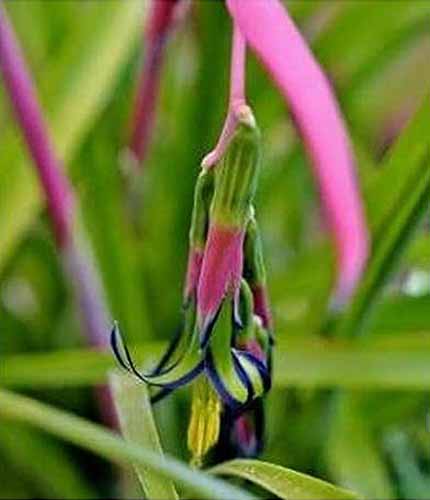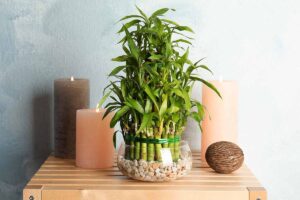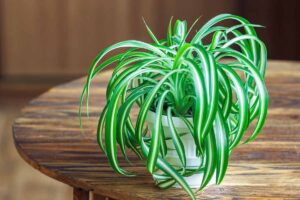Billbergia nutans
Tropical flowering queen’s tears is a non-parasitic epiphyte in the Bromeliaceae or bromeliad family.
In the wild, it clings to trees or rocks, doing no harm to its host, and nourishing itself with rain and airborne organic debris.
In gardens in USDA Hardiness Zones 9 to 11, it is a decorative ornamental species. And for those elsewhere, B. nutans is an easy-care houseplant.
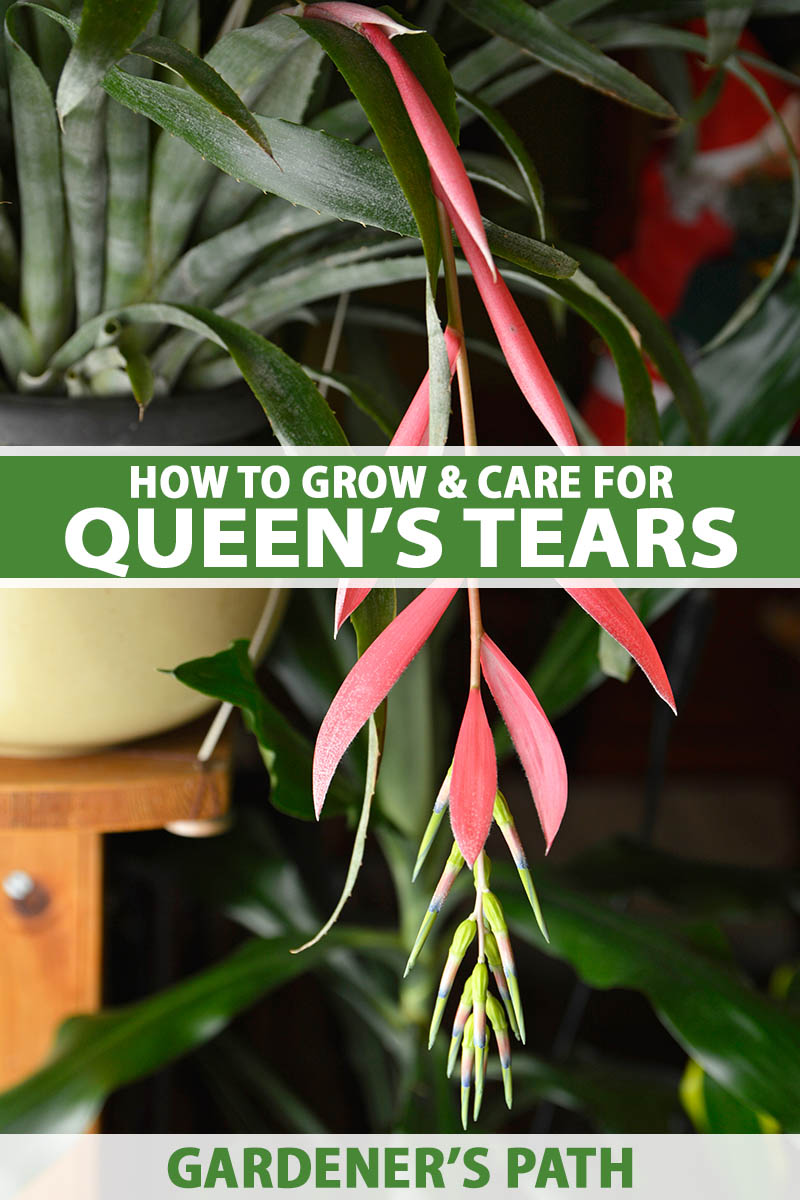
We link to vendors to help you find relevant products. If you buy from one of our links, we may earn a commission.
Our guide to growing bromeliads offers a general overview of cultivating various species at home.
This article focuses specifically on growing and caring for queen’s tears.
Here’s what we’ll cover:
What You’ll Learn
Let’s meet this blossoming beauty!
Cultivation and History
Queen’s tears is native to the arid climate of eastern coastal Mexico, Central America, most of South America, except for Chile, southern Argentina, and the Windward Islands.
In addition to being a rock- and tree-dwelling epiphyte, it grows on the organically-rich rainforest floor as a ground cover.
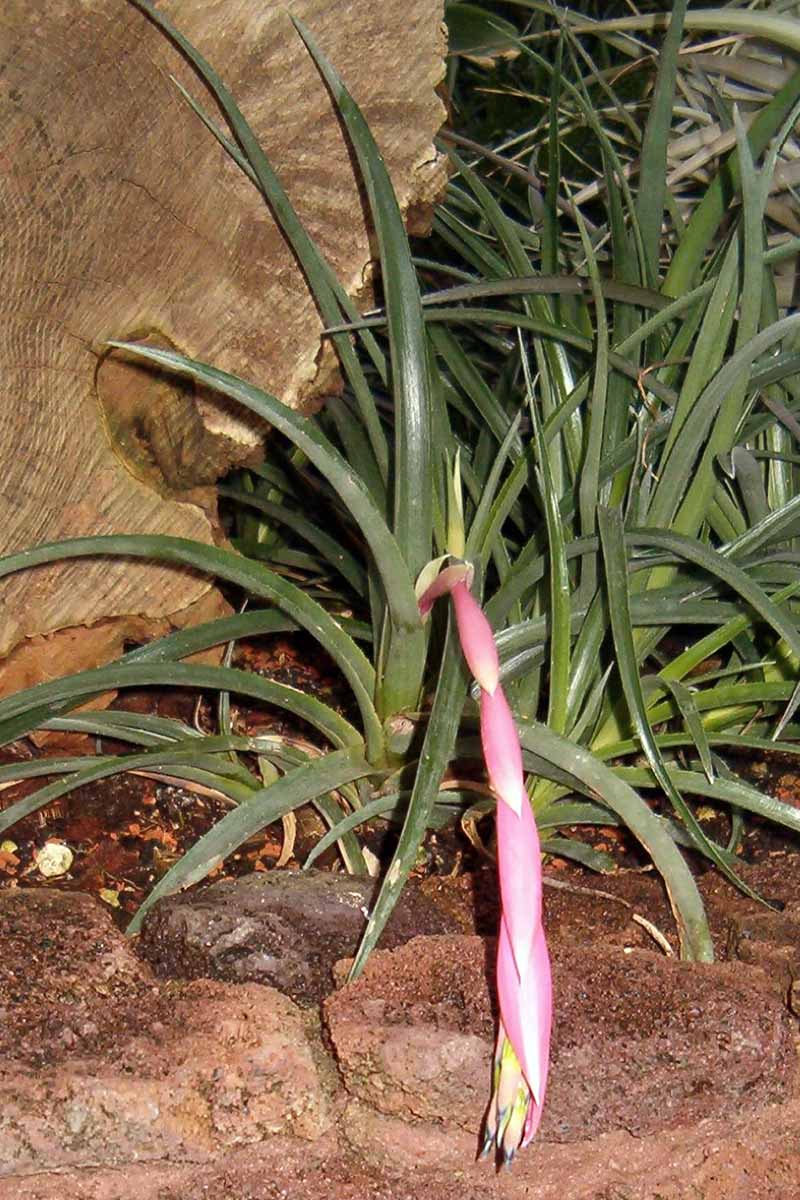
Swedish botanist Carl Peter Thunberg, who trained under the famed father of taxonomical classification, Carl Linnaeus, named the Billbergia genus to honor the self-taught Swedish botanist Gustaf Johan Billberg. It contains 62 species.
B. nutans was recognized and named in 1869 by German botanists Wendland and von Regel. “Nutans” is Latin for nodding and refers to the arching form of the foliage and inflorescences or flower-bearing stems.
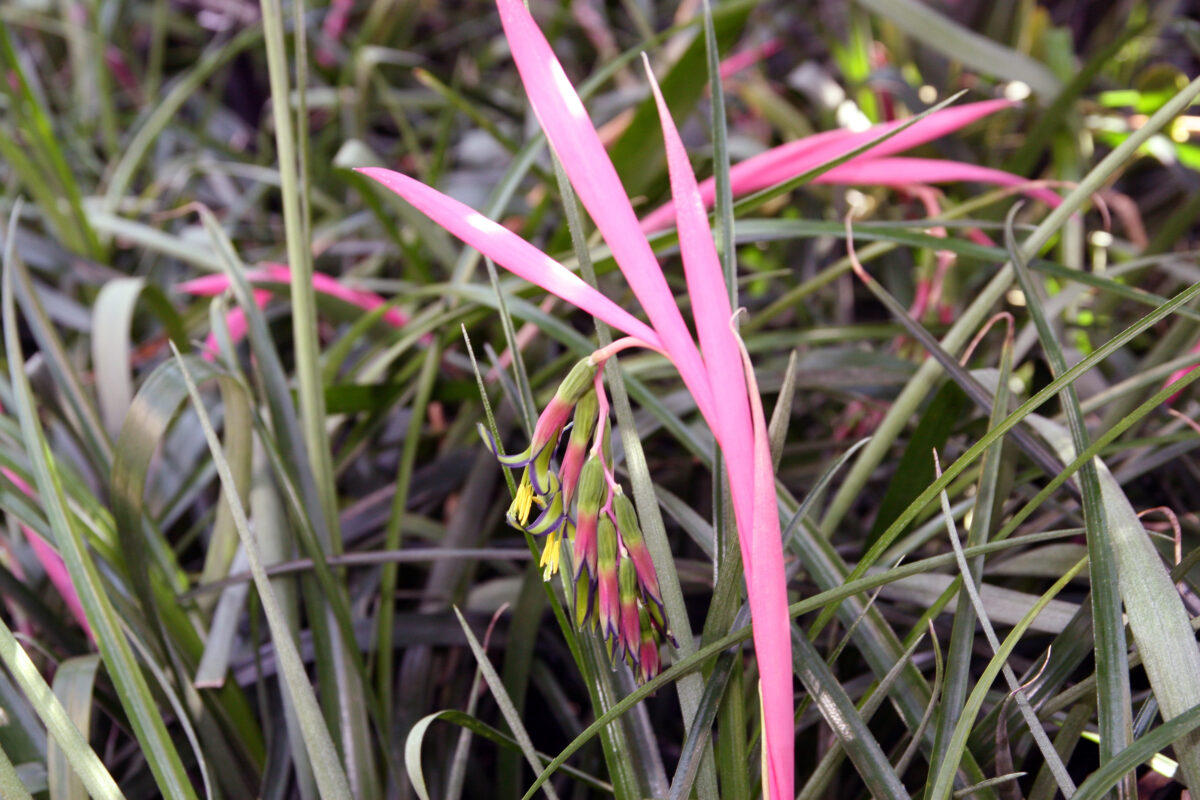
There is evidence of the hybridization of queen’s tears dating back to the 1920s.
In 1925, the American naturalist Theodore Luqueer Mead supplied the Brooklyn Botanic Garden with a specimen of a hybrid he had cultivated by crossbreeding two Billbergia species, B. nutans and B. zebrina.
Queen’s tears has a clumping or tufting growth habit with stems that grow upright, forming a vase-like rosette.
As they mature, the stems arch outwards to create a waterfall-like cascade of strappy evergreen gray-green or variegated green leaves with serrated edges. Mature dimensions are 12 to 24 inches tall and wide.
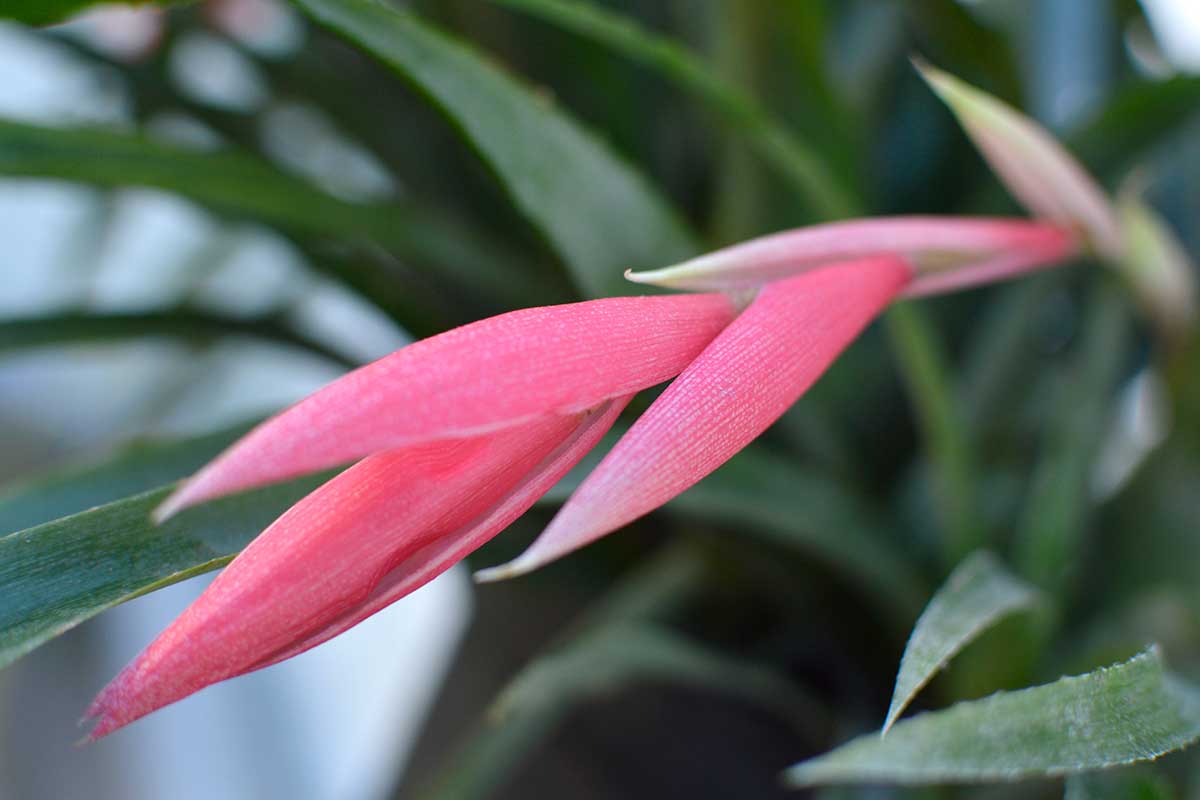
The flowers are borne at the terminal end of an arching, bright pink inflorescence.
They are inside pendant, bright pink bracts that open to reveal the blooms in all their regal glory. Recurved green, tubular petals sport royal blue margins, and are the inspiration for crowning this species a queen.
Prominent stamens laden with rich yellow pollen complete the majestic display, standing to attention protruding from the center of the flowers. Nectar sacs release glistening, sticky droplets when jostled and are Her Majesty’s “tears.”
At approximately 18 to 30 months of age, a bromeliad is mature enough to flower.
Each flower lasts a month or more, and after it fades, the attached foliage dies six to 12 months later. Bromeliads bloom randomly throughout the year, with new offsets continually replacing old post-bloom vegetation.
B. nutans is a water-wise species with high drought tolerance. Because it is native to arid climes, it has two unique methods of conserving water.
The first method is via is CAM (crassulacean acid metabolism) photosynthesis, in which the leaf “stomata” or gas exchange openings remain closed during the day to regulate moisture and open at night to release oxygen and take in carbon dioxide.
In addition, the foliage has hair-like trichomes that aid in retaining moisture absorbed through the leaves.
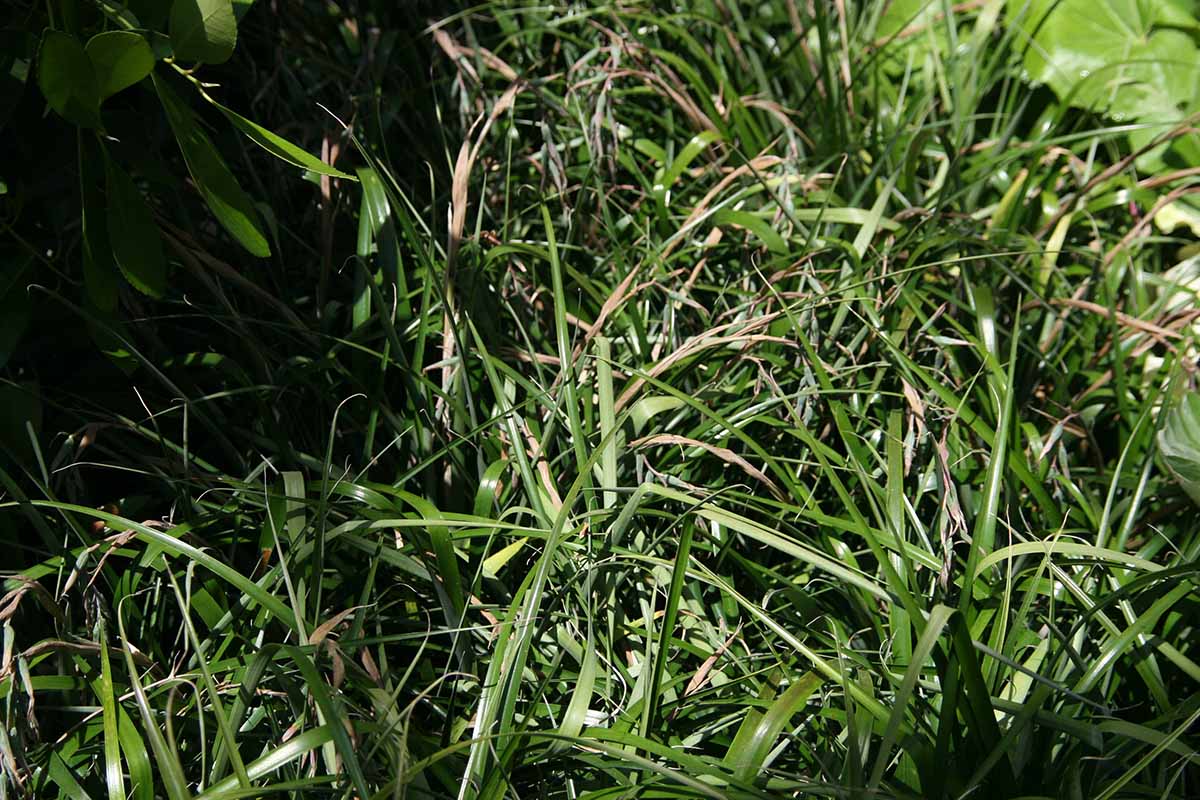
Unlike bromeliads that feature flattened, prominent water reservoirs in the center of the rosette, the grassy, vase-like foliage of queen’s tears does not have water wells, although you may read information to the contrary.
Watering the soil when the top inch is dry is all gardeners need to do to ensure adequate moisture intake.
An advantage of the absence of prominent water reservoirs is that the foliage isn’t as appealing to mosquitoes.
Queen’s tears is nontoxic to people and pets and is also known as the “friendship plant” because it is easy to propagate and give away, as we’ll discuss next.
Queen’s Tears Propagation
To grow queen’s tears, you can start with seeds, a division of an existing plant, a bare-root rhizome, or a nursery potted specimen.
From Seed
While it is possible to gather seeds from queen’s tears post-flowering, the seeds may not be viable or may produce traits different from the parent plant.
Since these plants are not self-pollinating, you’ll need to ensure you have two specimens – and pollinate the flowers by hand if you’re growing indoors.
In addition, seeds require surface sowing and germination on top of moist, acidic potting medium and are prone to rotting.
By Division
As mentioned, once a mature clump of foliage finishes blooming, it’s just a matter of time before the leafy tuft it sprang from dies.
And thanks to the offsets or “pups” that sprout beside the mature foliage, the plant continues to thrive.
Dividing is the process of removing one or more pups to start new plants to keep or give away.
The time to divide is when a pup is at least one-third the size of a parent rosette.
For a potted specimen, unpot the plant and lay it on its side on newspaper or a tarp. Remove enough soil to see and feel where the pup is attached to the clump of foliage.
Use clean pruners or a garden knife to slice down through the thick rhizome rootstock to sever the pup from the parent. Be sure the separated pup or division is a complete, separate rosette with green leaves and roots attached.
In the case of an in-ground plant, use a long-handled shovel to unearth the parent plant with the attached pup, lay it on its side, remove soil as needed, and sever the two.
Replant or discard the parent, as it has finished flowering.
Pot up or plant out the pup immediately, setting it just deep enough in potting medium or garden soil to hold it in place, with the crown approximately three-quarters of an inch to an inch below the rim of the pot. Moisten the soil, but avoid oversaturation.
If you accidentally sever the pup’s roots, dip its base into rooting hormone and set it into potting medium or garden soil as described above. Use stones beside it for support if necessary.
Provide bright indirect sunlight indoors and afternoon shade outdoors.
Learn more about propagating bromeliads via offsets in our guide.
Transplanting
If you are starting with a bare-root rhizome, set it into potting soil just deep enough for it to be self-supporting, as discussed in the division section above.
To transplant a potted nursery specimen, note its depth in the original container and replicate it in the new one, backfilling firmly to hold the plant in place.
How to Grow Queen’s Tears
Queen’s tears requires bright, indirect sunlight indoors that is easily achieved by placing it in proximity to a south- or east-facing window.
Avoid placing it in direct sunlight as this can scorch the flowers and foliage. Outdoors, a setting that provides afternoon shade reduces the risk of sun scorch.
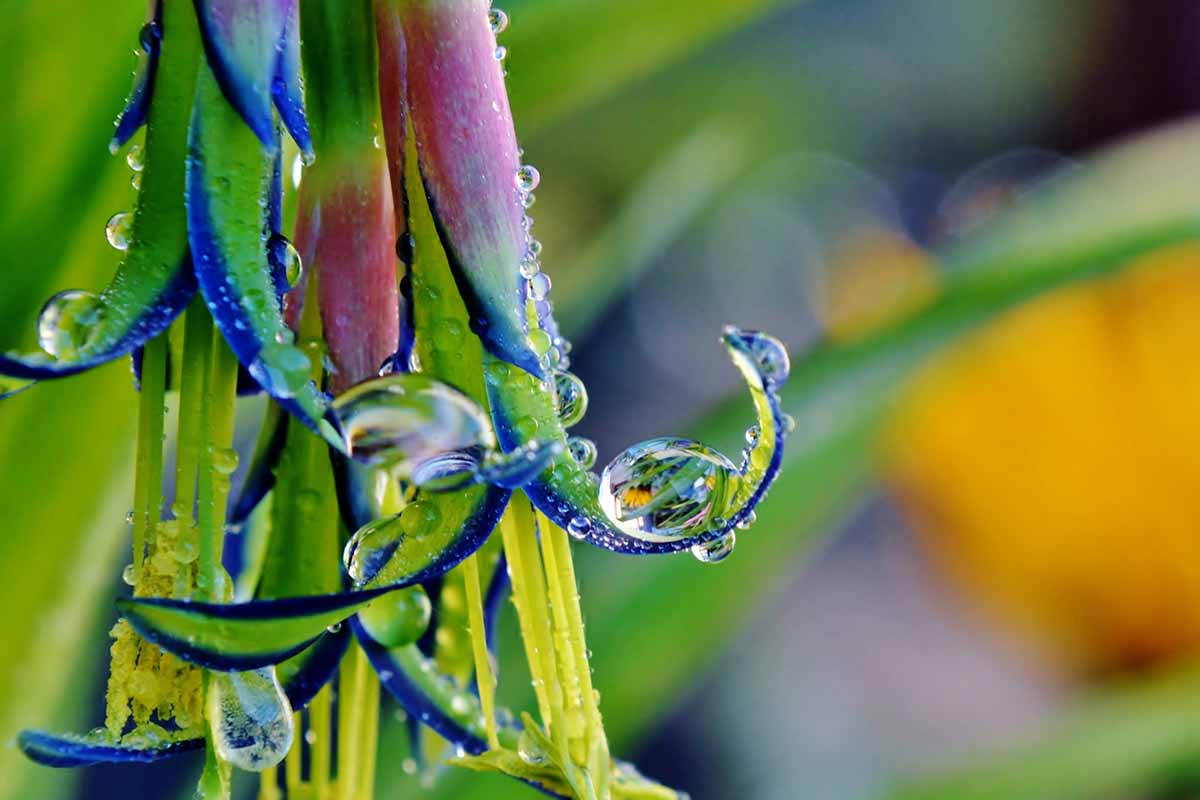
The ideal temperature is 70 to 80°F during the day and 65 to 70°F at night.
The soil should be acidic, with a pH of between 5.0 and 6.0. As Billbergia species grow as both epiphytes and terrestrial ground covers, the soil you choose can either be bark chips or a potting mix that is loamy and rich in humus.
The best potting soil to use is one that is loose and airy and drains rapidly, like a cactus, palm, and citrus mix, such as this one from Miracle-Gro.

Miracle-Gro Cactus, Palm, and Citrus Potting Mix
Sand and perlite help to make this product compaction-resistant and fast-draining for successful bromeliad cultivation.
Miracle-Gro Cactus, Palm, and Citrus Potting Mix is available via Amazon.
Fertilizer is not crucial, as these plants are not heavy feeders. If you choose to feed, do so during active summer growth, and use a product specifically formulated for bromeliads.
If you’re using a granular product, water first and apply it to the soil, avoiding the foliage. Misting products are applied directly to the foliage.
Miracle-Gro Orchid Plant Food Mist is suitable because bromeliads and orchids share similar cultural requirements and benefit from foliar misting as a moisture source.

Miracle-Gro Orchid Plant Food Mist
Miracle-Gro Orchid Plant Food Mist is available via Amazon.
If you cultivate these plants indoors, strive to maintain a humidity level between 50 and 75 percent.
To increase the ambient humidity, you can mist the foliage and flowers and/or set the pot on a drip dish atop a single layer of pebbles in a pan of water that comes just to the top of the gravel base.
Don’t place the pot directly on the pebbles without a drip dish to avoid absorbing excess water.
Queen’s tears plants are genetically wired to survive in arid conditions. If your water is hard or mineral-rich, leave it out overnight to off-gas chemicals like chlorine.
Mineral-rich water may leave white spots on the foliage over time.
If the top inch of soil is dry, it’s time to water. You can use a moisture meter to guide you.
Wet the soil, but avoid oversaturation.
Remember, queen’s tears is water-wise and drought tolerant. Neglect is better than overgenerosity.
Growing Tips
- Provide bright indirect sunlight indoors and afternoon shade outdoors.
- Skip the fertilizer or use it sparingly.
- If growing indoors, provide 50 to 75 percent humidity enhanced by misting or a bed of wet stones beneath the drip dish as needed.
- Leave hard water out overnight to avoid watering-induced leaf discoloration.
- Water when the top inch of soil is dry.
Maintenance
Remember to leave treated water out overnight in an open vessel to disperse some of the harsher chemicals and avoid oversaturation, a nemesis of bromeliads and epiphytes.
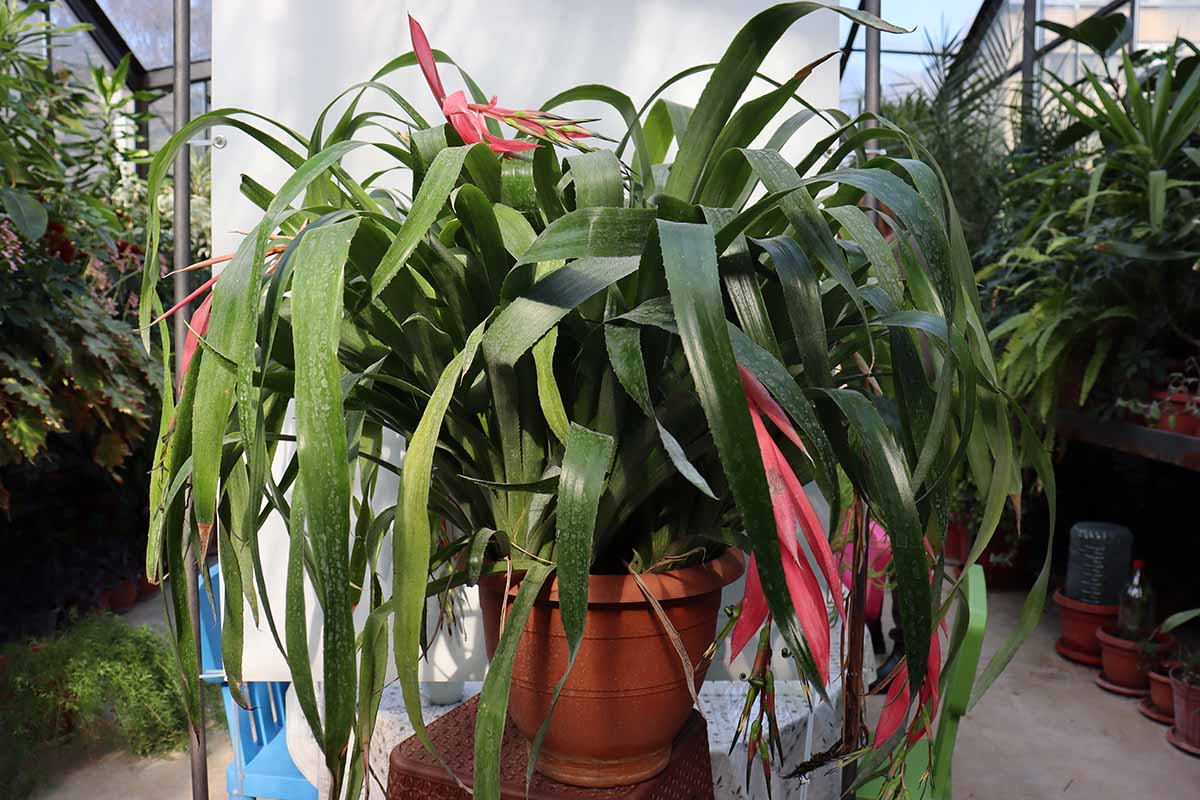
Per the New York Botanical Garden, avoid overfertilizing which can lead to leggy stems and distort the signature rosette vase shape.
Use clean pruners to remove spent flower inflorescences as close to their base as you can without damaging neighboring foliage. Remove decaying post-bloom rosettes when they begin to wilt.
In Zones 9 to 11, you can leave plants outdoors year-round. You may even be able to do so in Zone 8, as plants can withstand brief periods in the 20s and even the teens.
Provide outdoor pots with winter insulation like a burlap wrap, and bring them close to the house or indoors during cold snaps.
However, if you are cultivating outdoors in Zone 8 and below, where the temperature remains below the 30 to 32°F range for extended periods, you’ll need to bring your pots indoors for the winter months.
And finally, when you need to repot, choose a container that is no more than one-third larger than the size of the root ball. Shallow and snug is best. Avoid overly deep vessels that hold too much water and promote fungal disease.
Where to Buy
Classification of B. nutans is constantly evolving. Some bromeliad experts accept B. nutans var. schimperiana and B. nutans var. striata as naturally occurring variants, while others lean more toward classifying them as distinct species.
Differences among variants may be subtle and detectable only by trained eyes. And while you may never come across this information on a plant tag, aficionados may find the minutiae of interest.
In addition, there are plants on the market listed as cultivated varieties of B. nutans, like ‘Blondie,’ that may be a golden-leafed “sport” or randomly occurring natural variant of a completely different type of Billbergia.
There is still much to learn about the Billbergia genus and the nutans species!
A known and accepted cultivar is B. nutans ‘Variegata,’ that has striking green foliage with cream margins.
You can find a one-foot-tall queen’s tears plant in a one-gallon container available from Walmart.
You can also find seven- to 11-inch bare root rhizomes available from TruBlu Supply via Amazon.
Managing Pests and Disease
Healthy bromeliads in an ideal growing environment are not typically prone to pests or disease problems.
However, there are a few you should know.
Dry indoor environments may promote an infestation of:
Use insecticidal, fungicidal neem oil to treat affected foliage.
Overly wet conditions, poor air circulation, and/or poorly draining soil may invite fungal diseases, including:
- Crown and Root Rot
- Leaf Spot
- Rust
Crown and root rot caught early may be reversible. Symptoms include a foul odor, mushy brown discoloration at the base, and loose leaves.
Unpot the plant and rinse the soil from the roots. Remove all discolored, mushy, malodorous roots and foliage.
Spray the remaining roots with a mixture of one part hydrogen peroxide mixed with two parts water. Allow the roots to dry entirely before repotting.
Sanitize the container by spraying the inside with the same solution, letting it sit for 30 minutes to disinfect, and rinsing it completely before use.
Repot with fresh potting medium.
For leaf spot, remove severely affected foliage and treat the remaining leaves with fungicidal neem oil.
And in the case of rust, you’ll also need to remove the affected foliage.
Treatment is challenging because many types of rust are fungicide resistant, and the harsh chemicals required are geared more toward commercial growers than home gardeners.
Avoiding these issues with good cultivation practices is more likely to be successful than treatment.
Best Uses for Queen’s Tears
Queen’s tears is an eye-catching ground cover with fountains of foliage and arching blossom inflorescences. It fills in densely as new pups take the place of old rosettes.

Container gardening is ideal for climates not conducive to overwintering outdoors, as plants can spend the summer outdoors in the fresh air and return to the house for the cold months of the year.
And for those who prefer to grow it indoors year-round, B. nutans is an easy-care houseplant that requires bright indirect sunlight and occasional watering to keep it happy.
To display in a pot, choose one that hangs or stands on a pedestal to show the cascading tendrils of flowers and foliage to best advantage.
Quick Reference Growing Guide
| Plant Type: | Perennial epiphyte | Flower / Foliage Color: | Blue, green, pink bract/gray-green or variegated green |
| Native to: | Parts of Central and South America, Mexico, Windward Islands | Maintenance: | Low |
| Hardiness (USDA Zone): | 9-11 | Tolerance: | Drought, shade |
| Bloom Time: | Monocot/evergreen | Soil Type: | Loamy humus, bark |
| Exposure: | Part shade (outdoors), bright indirect sunlight (indoors) | Soil pH: | 5.0-6.0 |
| Time to Maturity: | 18-30 months | Soil Drainage: | Well-draining |
| Spacing: | 18-24 inches | Attracts: | Butterflies, hummingbirds |
| Planting Depth: | Surface sow (seed), same depth original container (transplants) | Uses: | Container, ground cover, houseplant |
| Height: | 12-24 inches | Order: | Poales |
| Spread: | 12-24 inches | Family: | Bromeliaceae |
| Water Needs: | Low | Genus: | Billbergia |
| Common Pests and Diseases: | Mealybugs, scale, whiteflies; crown and root rot, leaf spot, rust | Species: | Nutans |
The Queen of the Bromeliads
Now that you know how to grow and care for your own queen’s tears plant, all that’s left is to decide if you can grow it outdoors in your location, plan to give it summers al fresco, or intend to keep it indoors year-round.
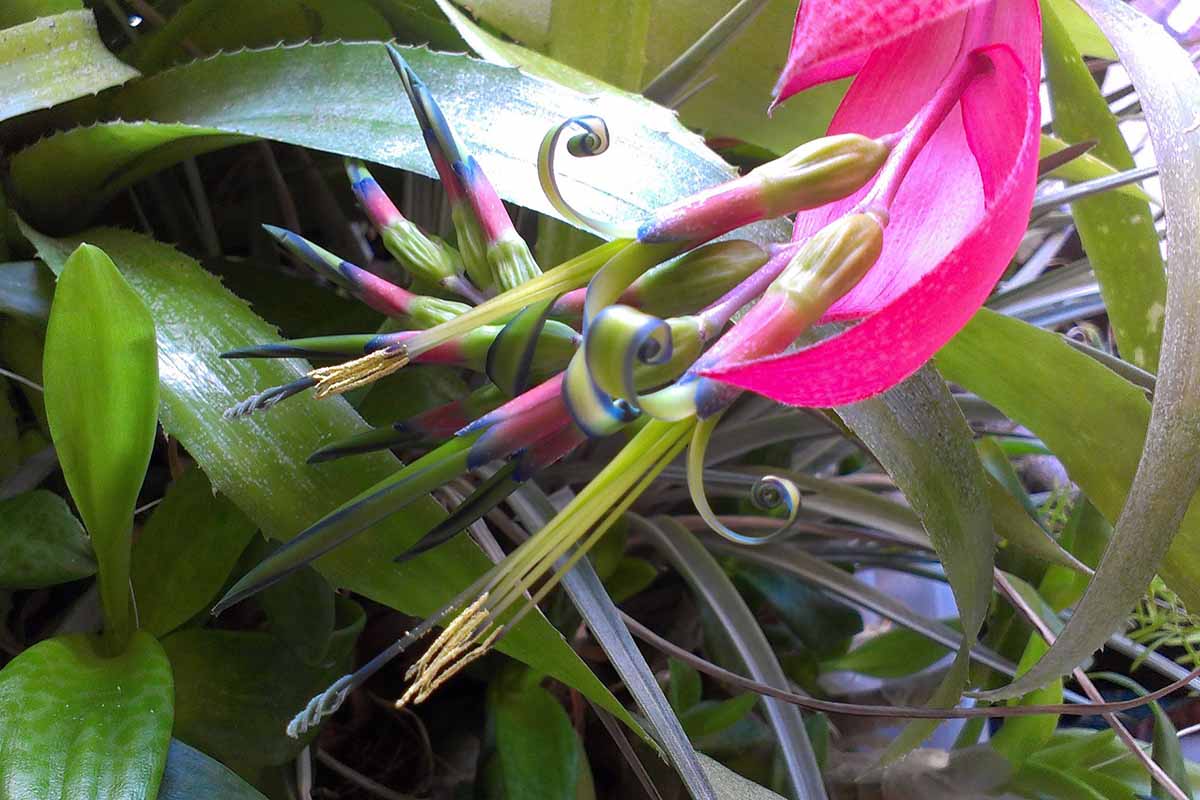
Offer moisture sparingly, misting the foliage and flowers to increase the ambient humidity as needed and watering when the top inch of soil is dry.
To support moisture storage and photosynthesis, try to maintain a growing environment with temperatures of 70 to 80°F during the day and 65° to 70°F at night.
With best practices, your queen will surely be the shining star of the realm in any garden or houseplant setting.
Do you grow Billbergia nutans? What advice can you share in the comments section below?
If you found this guide helpful and want to read more about growing epiphytic houseplants, check out these guides next:
